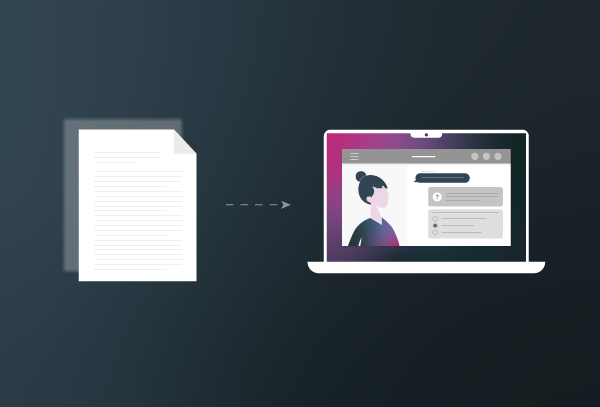More and more universities are moving towards online delivery of classes. For some, this means recording lectures and posting them online, however, this isn’t always the best student experience. Many lecturers are in the tricky position of having to rework their course materials to fit into a different delivery mode in a short timeframe. With Guroo.pro we’ve made it easier than ever to make this transition, here are a few tips to help you in your efforts.

Chunking and fitting the material to the mode of delivery
You will need to “chunk” your materials differently to fit it into your online learning plan. This could include adjusting how much content you can include in your course due to time constraints imposed by online delivery. A great lecturer might be able to hold the attention of a room for an hour, but not even the most animated presenter will be able to keep viewers watching a video presentation going for as long. Chunking your material and matching the parts to their most relevant and appropriate means of delivery is key to creating successful and engaging online learning.
Planning your time - what do you need to prepare?
Another thing to consider is when and how much material you want to give students access to. Are you unlocking material every week or giving access to the entire course’s readings and other resources from the start of term? Giving students access to their weekly modules, readings and assignment details upfront is supporting best online teaching practice, as students are able to plan their studies more effectively, but places considerable demands on your preparation as a facilitator.
Selecting tools for interactive activities
While information previously delivered in lectures can be broken up and repackaged, tutorials and other interactive learning driven by personalised and social learning are posing new challenges. Moving face-to-face tutorials online means taking synchronous activities and making them work in a completely asynchronous environment. This takes planning, both when selecting the most appropriate tools (such as discussion forums, webinars, group chats) but also when planning for when, and how, you as a lecturer remain present and supportive in the learning space.
Supporting self-directed learning
Moving learning online means increasing the amount of self-directed learning you are asking your students to undertake. For them to be successful, you will need to design a learning environment that promotes independence, initiative and ownership, while offering enough scaffolding and support to help learners get used to this new way of learning. This is especially important to keep the engagement of students who might be used to being directed and guided by a physically present tutor.
Creating and sustaining engagement
Every educator knows that creating social and cognitive presence and engagement is paramount to effective learning. When you take your course online you will need to consider how to best design a learning environment that promotes this. To enable effective social learning, you will also need to ensure that collaborative tasks and activities can be delivered in a way that makes them feel authentic and engaging.
Working with feedback
As we all know, timely feedback is key to learning. However, giving feedback digitally can prove challenging, as you might not have the same opportunity to contextualise your comments as you would if you delivered them in person. Facial expressions, gestures and intonations can be as important as the content of your feedback and finding the most suitable way to give effective feedback and support to students is one of the most important aspects of designing quality online learning.
Choosing the right platform for delivery
Rather than being the first task you tick off the list, you should, if possible, wait to select your platform until you have designed your course and know what your minimum requirements are. This is much preferable to investing in a platform only to find that it is not capable of supporting activities central to your course design. You might also want to consider to what extent you need to know how to work the platform and support students with questions to ensure smooth delivery.
Making your course accessible
As with any other web-delivered service, it is essential (and legally required) that you make your online course accessible for each and every student that wishes to partake in it. On a basic level this means choosing a platform that supports WCAG 2.0. but it also means considering things like:
- What programs are my students required to use in their learning?
- Are they freely available or do they need to be purchased?
- Will my materials be accessible to students who might have poor quality internet connections?
- Will some students need to do parts of the course on their mobile device?
- How do I ensure the experience is as seamless as possible for them?


